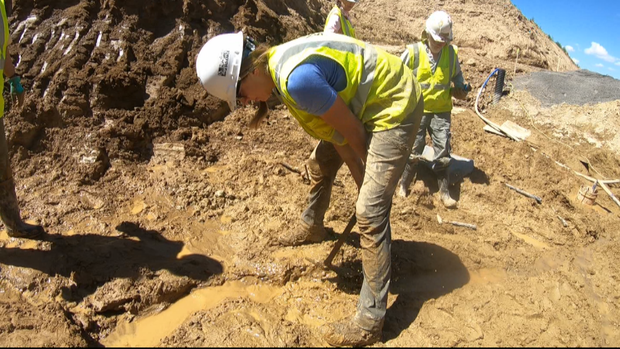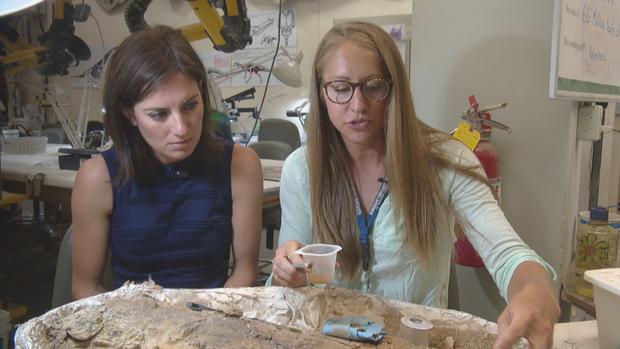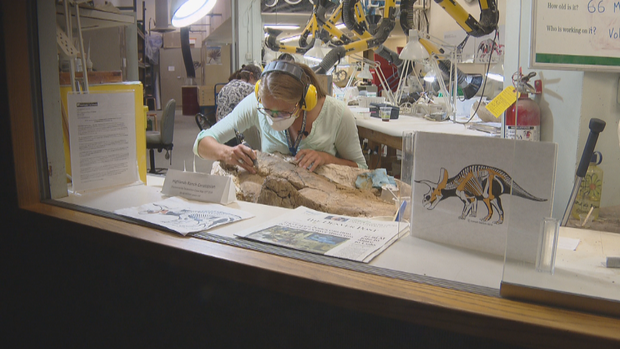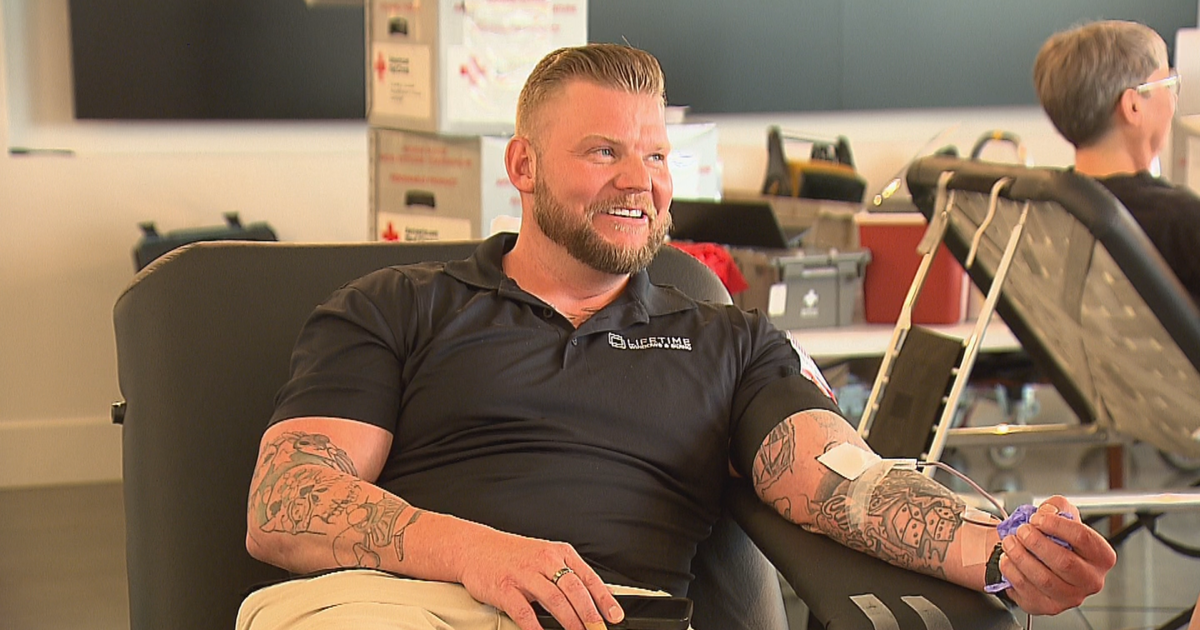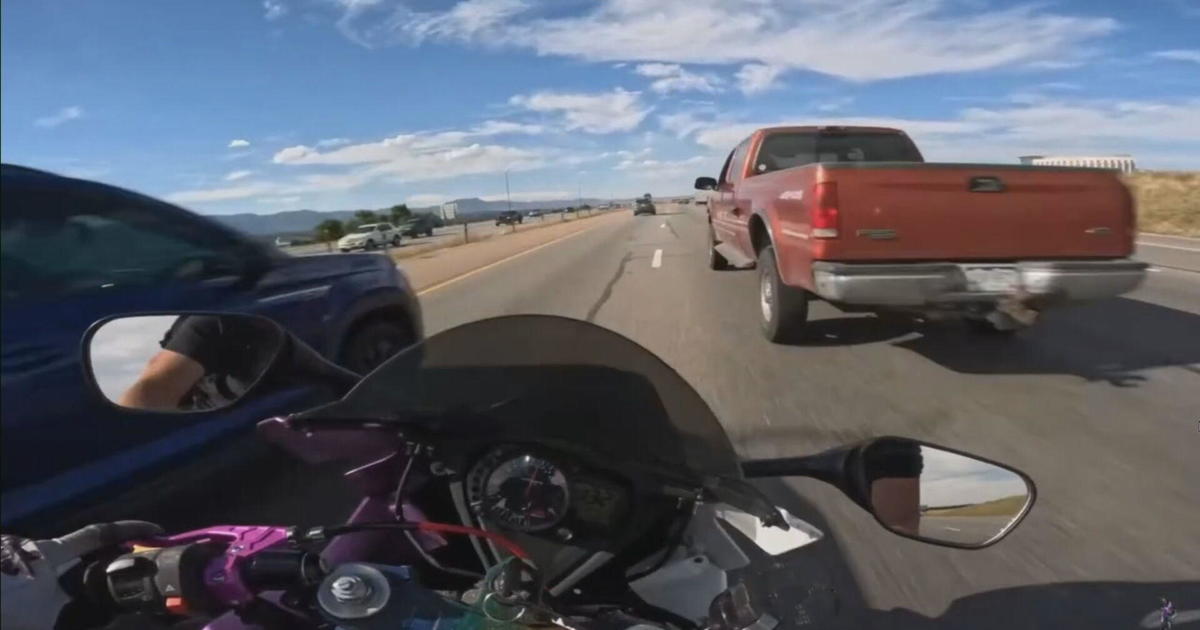Public Invited To Fossil Lab To See Part Of Highlands Ranch Dino
DENVER (CBS4) - Families can now get a close-up of the Colorado's latest dinosaur discovery. On Tuesday, volunteers with the Denver Museum of Nature and Science were hard at work in the lab, cleaning a cheekbone fossil from the Highlands Ranch Triceratops.
"This big triangular bone in front of me is part of the dinosaurs cheek, it's a bone called the jugal," said Natalie Toth, Chief Fossil Preparator at DMNS.
The big dig, which began in May, uncovered more than 30% of a full-grown adult triceratops from a construction site near Santa Fe and C-470. While the fieldwork is finally over, there are countless hours of preparation work needed to fully clean the fossils collected.
The cheekbone was one of the first Toth and her team brought back from the site and the only one they are publicly working on.
"I think if every single person in our lab worked on this, every single day for 40 hours a week, we could have this thing done and cranked out in a few months but…" Toth chuckled.
Including the Highlands Ranch Triceratops, Toth is overseeing fossil preparations from about 10 different dig sites across the United States.
"Every single thing that we collect from the field is contributing to this body of knowledge that we have here at the museum. The fossils, when they go into our collection, they're used by researchers and they stay in our collection forever."
While the triceratops is crucial to research, Thoth knows it's also important for younger generations to see.
"Dinosaurs are such a great gateway topic into science. I feel so fortunate that I have that as part of my life, my career, as something I can speak to because it is something that captivates everyone. From age 4 to 104."
On Tuesday, adults and children lined up outside the fossil lab to watch Toth and other volunteers work on the fossils.
"You know I feel so fortunate every day. I think our department as a whole, we work so well together, and we're so collaborative, and it's just such a positive environment to walk into work every day that it makes... I already love my job so much but it makes it that much better," said Toth.
There is no timeline for when the fossils will be ready for display. Toth says when that time comes, it would be nice to see it placed next to the Brighton triceratops discovered in 2003.

